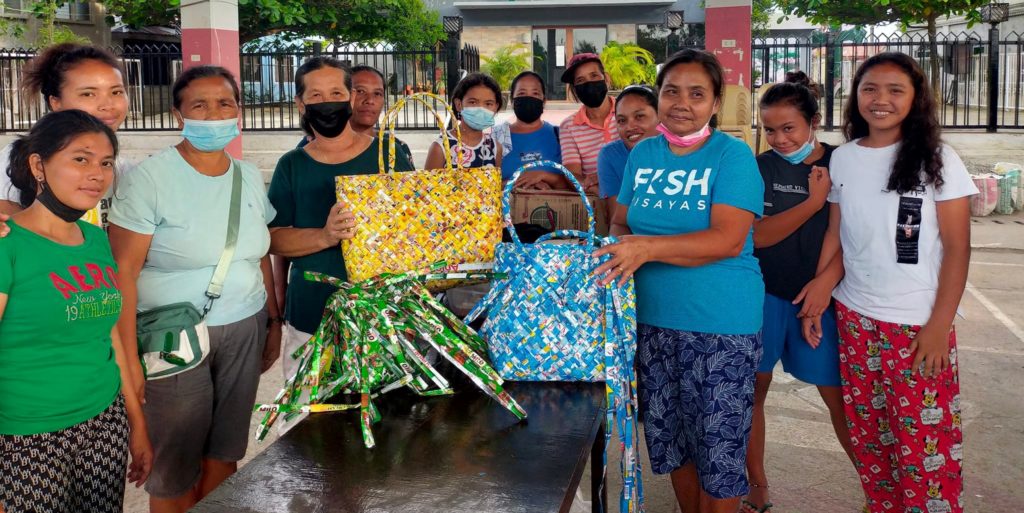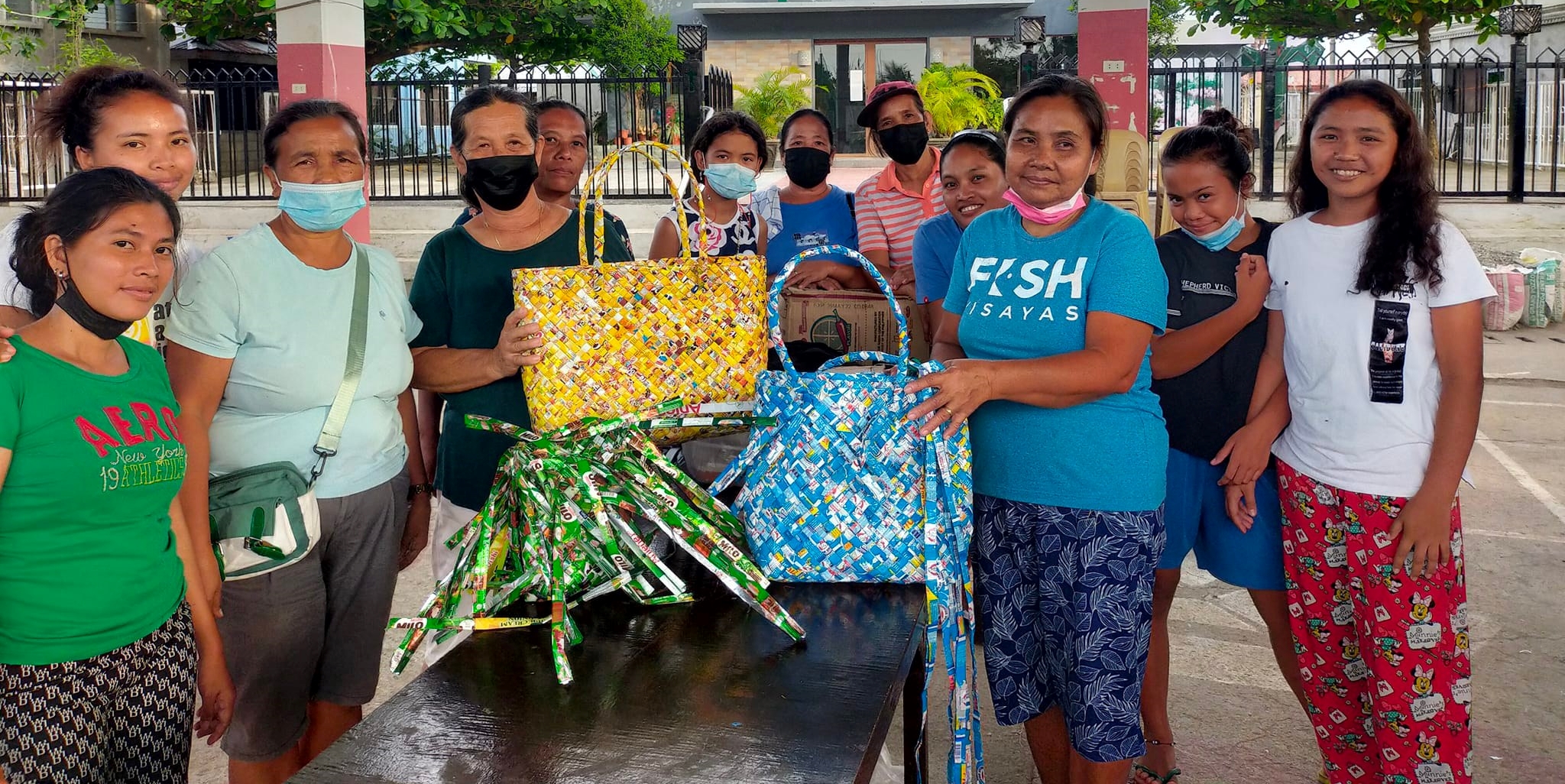

Brgy. Patao Livelihood Association (BPLA) members conducted training on weaving residual plastic waste in Barangay Patao, Bantayan Island, Cebu, on February 17-18, 2022. The Barangay purok leaders and residents have joined the training.
This will help the barangay reduce the number of plastic waste that ends up in the ocean and landfills and turn it into a source of alternative livelihood and an income-generating activity for the PO and barangays.
The project is partnered with the Sillon Women, one of the forefronts in the plastic weaving initiative, to train the PO members, barangay leaders, and residents from the three partner PO areas. The training focuses on transferring practical knowledge through actual demonstration and letting the participants weave their bags. The LGU also assisted in marketing this new product through social media, and currently, there is already a huge demand from the market for this plastic bayong.
Plastics are not only crucial to the Philippines’ economy (contributing $2.3 billion in 2018), but they also supply low-cost consumer items to low- and middle-income families. But unfortunately, the Philippines has developed into a “sachet economy.” It relies heavily on single-use plastics like layered sachets and pouches, exacerbating the region’s alarming levels of marine plastic pollution. The country uses 163 million sachets each day, according to some estimates.
Like many other fast-developing countries, the Philippines faces unsustainable plastic manufacturing and use and inadequate solid waste disposal infrastructure. As a result, the Philippines generates an astounding 2.7 million tons of plastic garbage every year, with an estimated 20% of it ending up in the ocean. The Philippines’ coastal populations and the fishing, shipping, and tourism industries are particularly exposed to the effects of marine debris because the country is made up of over 7,500 islands.
According to a 2021 analysis by Oxford University’s Our World in Data, Asian rivers produce around 80% of worldwide ocean plastic, with the Philippines accounting for a third of that total. The Philippines lacks a defined strategy for dealing with its plastics problem. However, the environment department claims it has been discussed with manufacturers to find waste management solutions.
COVID-19, on the other hand, has made the fight against plastic waste more difficult to win. As per the United Nations Environment Programme, approximately 300 million tons of trash are produced annually, a problem that has been exacerbated by the pandemic, which prompted a burst for gloves, takeaway food, plastic face shields, containers, and bubble wrap as online shopping skyrocketed.
Meanwhile, the initiative is a continuation of the Solid Waste Management program of the project piloted last February to December 2021. However, since the initial training conducted had a limited number of participants, there is a need to have more trained individuals to ensure a higher impact. Thus, the project continued this specific training course to capacitate the 3 POs and their barangays extensively.

